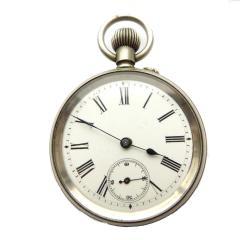-
Recently Browsing
- No registered users viewing this page.
-
Topics
-
Posts
-
OK! I was able to get a nice set of timing washers from ebay! And they worked really well. I needed to slow down the movement by about 6min and I put four (=two pairs) of 3-minute washers (rated for the the size of the movement) and it did pretty much exactly that. On one pair of screws, there were already washers. So I added a second washer on those screws. Maybe not ideal, but it doesn't cause any problems. Poise is ok.. not perfect.. but I had so many issues with the watch that I decided to accept it. It's a 90-year-old watch. Delta is around 40 seconds.
-
By RichardHarris123 · Posted
I think it is friction fit, there are tools to remove them, cheaper versions are available. You could try adapting some pliers, see my crap drawing. The pushers are available in various sizes, you could measure once the tube is removed. -
The entry jewel's not as bad but seems still too much lock. I do epilame the escape wheel and pallet jewels, then run dry for about 15 minutes, then put 9415 in exit jewel very little at a time and check with backlight how the oil's distributed. Another question is about capped escape wheels. Should I somehow wear the epilame off the pivots before installing the wheel? I normally let the escape wheel run dry for that said 15 minutes when there's no cap jewel.
-
Sometimes there's a certain place under the bezel where the case knife is supposed to be placed. In this borrowed pic there's a small crack at 3 o'clock.
-
Hi my fellow forum addicts, I'm writing this as I seem to have a hole in my knowledge (probably one of many!) I seem to have a horrible time removing bezels from watches. I am talking about the rotating type on sports/diving watches. I see many videos where the guy on screen barely inserts the case knife under the bezel and with no effort it pops off easily, then at the end it clicks back into place by hand with no effort. I am sure that part of this is due to skillful video editing, but I seem to wrestle with them, I have tried case knives and even when using the tool below, I tighten it up in several positions and nothing happens. On a many occasions I have even warped the bezel in my attempts to remove it. Similarly, I have issues replacing bezels after cleaning etc. and often they have to be replaced using a press tool and inevitably are far too tight and will not rotate or loose to the point where they fall off or loose their click (perhaps due to micro warping when I tried to remove??). It is now to the point where I am actually avoiding watches with bezels as my success rate with them is terrible......please help!! In short I am asking: What am I doing wrong? What is the best method for removing bezels - how do you do it? What is the best method for replacing bezels - how do you do it? Any tips or tricks? Thanks
-







.thumb.jpg.cb17a66989f1e796fd4217db2e9ca9df.jpg)


Recommended Posts
Join the conversation
You can post now and register later. If you have an account, sign in now to post with your account.
Note: Your post will require moderator approval before it will be visible.